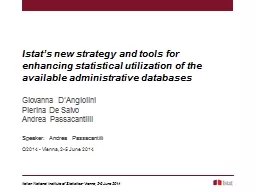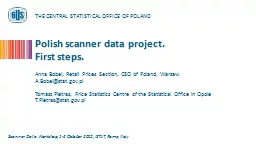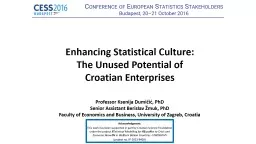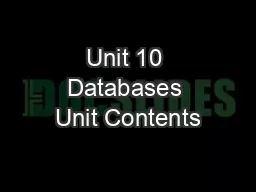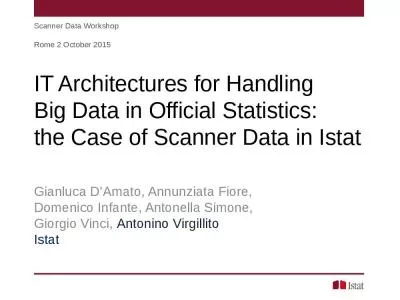PPT-Istat’s new strategy and tools for enhancing statistical utilization of the available
Author : celsa-spraggs | Published Date : 2019-11-29
Istats new strategy and tools for enhancing statistical utilization of the available administrative databases Giovanna DAngiolini Pierina De Salvo Andrea Passacantilli
Presentation Embed Code
Download Presentation
Download Presentation The PPT/PDF document "Istat’s new strategy and tools for en..." is the property of its rightful owner. Permission is granted to download and print the materials on this website for personal, non-commercial use only, and to display it on your personal computer provided you do not modify the materials and that you retain all copyright notices contained in the materials. By downloading content from our website, you accept the terms of this agreement.
Istat’s new strategy and tools for enhancing statistical utilization of the available: Transcript
Download Rules Of Document
"Istat’s new strategy and tools for enhancing statistical utilization of the available"The content belongs to its owner. You may download and print it for personal use, without modification, and keep all copyright notices. By downloading, you agree to these terms.
Related Documents

